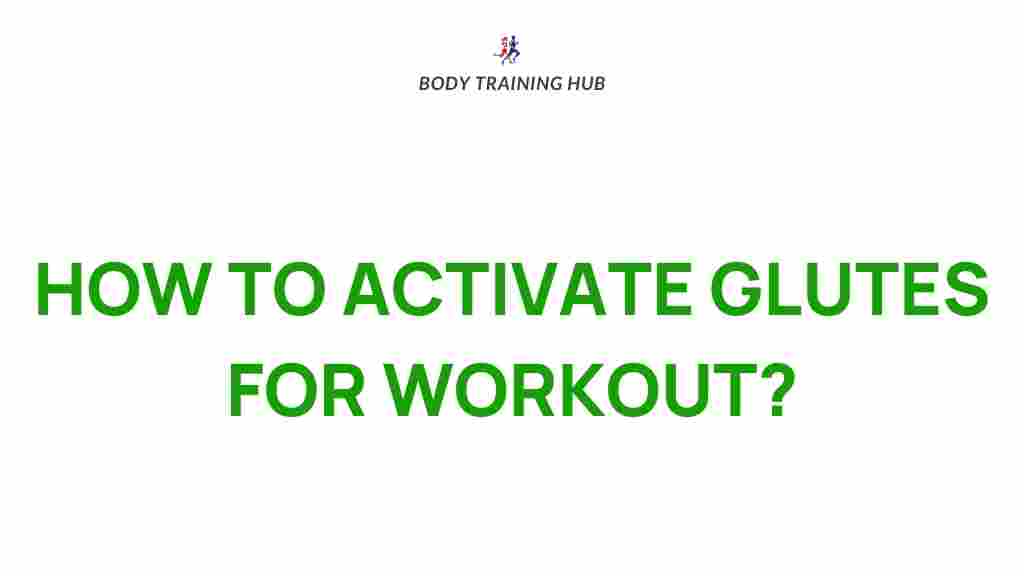What Is Glute Activation and Why Does It Matter?
The term glute activation refers to the process of properly engaging the gluteal muscles—comprising the gluteus maximus, medius, and minimus—during exercise. Many people struggle with inactive or underperforming glutes due to sedentary lifestyles, leading to poor posture, decreased performance, and even injury. By focusing on glute activation, you can enhance your workouts, improve athletic performance, and protect your body from unnecessary strain.
Incorporating glute activation exercises into your routine can help you:
- Improve hip mobility and stability.
- Enhance lower body strength.
- Prevent injuries related to muscle imbalances.
- Boost athletic performance in sports and weightlifting.
Understanding the Anatomy of the Glutes
The glutes are the largest muscle group in your body and play a critical role in movement and stability. They consist of:
- Gluteus Maximus: The largest muscle, responsible for hip extension and external rotation.
- Gluteus Medius: A key stabilizer for the pelvis, aiding in abduction and internal rotation.
- Gluteus Minimus: Similar to the gluteus medius, it assists in hip stabilization and movement.
Inactive glutes often lead to overcompensation by other muscles, like the hamstrings or lower back, which can result in discomfort and inefficiency.
How to Incorporate Glute Activation into Your Workout Routine
Activating your glutes doesn’t require complex equipment or extensive time. Here’s a step-by-step guide to ensure your glutes are fully engaged:
Step 1: Start with Dynamic Warm-Ups
A proper warm-up prepares your muscles for activation. Dynamic stretches and movements increase blood flow to your glutes, improving their responsiveness. Examples include:
- Leg swings (front-to-back and side-to-side).
- Hip circles to loosen tight hip joints.
- Walking lunges with a twist.
Step 2: Focus on Isolation Exercises
Begin with isolation exercises that specifically target the glutes. These exercises help activate the muscle fibers and improve the mind-muscle connection. Try these:
- Glute Bridges: Lie on your back, bend your knees, and lift your hips while squeezing your glutes.
- Clamshells: Lie on your side with knees bent, and open your top knee while keeping your feet together.
- Fire Hydrants: On all fours, lift one leg to the side, maintaining a 90-degree bend at the knee.
Step 3: Use Resistance Bands
Resistance bands are an excellent tool for adding extra tension to your glutes. Incorporate them into exercises like:
- Band Walks: Step laterally while keeping tension in the band.
- Squats: Place the band above your knees for added glute engagement.
- Kickbacks: Attach the band to your ankle and perform controlled rear leg lifts.
Step 4: Integrate Glute-Focused Compound Movements
After isolating your glutes, incorporate compound exercises like squats, deadlifts, and lunges. Focus on proper form and engage your glutes during the movement:
- Push through your heels to recruit your glutes effectively.
- Keep your back straight and core engaged to avoid lower back compensation.
- Slow down the movement to enhance muscle activation.
Step 5: Cool Down and Stretch
A cool-down period with static stretches ensures your muscles recover and maintain flexibility. Include stretches like the pigeon pose, seated forward fold, and figure-four stretch to lengthen your glutes and reduce post-workout tightness.
Troubleshooting Common Glute Activation Issues
Even with the right exercises, some individuals struggle with glute activation. Here are common challenges and how to overcome them:
Weak Mind-Muscle Connection
If you can’t feel your glutes working, focus on slower, controlled movements and tactile feedback, such as placing your hands on your glutes to ensure they contract.
Overactive Supporting Muscles
Tight hip flexors or hamstrings can dominate your movements, inhibiting glute engagement. Combat this with targeted stretches and foam rolling to release tension.
Poor Exercise Form
Improper technique reduces glute involvement. Work with a trainer or follow video demonstrations to perfect your form. For example, during a squat, ensure your knees stay in line with your toes and avoid leaning forward excessively.
Tracking Progress and Staying Motivated
Regularly assess your progress to stay motivated. Use these strategies to keep on track:
- Take before-and-after photos to monitor physical changes.
- Keep a workout journal to track your exercises, weights, and repetitions.
- Celebrate small victories, such as improved strength or reduced discomfort during movement.
Consistency is key. Set realistic goals and remember that building strong, active glutes takes time and dedication.
Additional Resources for Glute Activation
If you want to dive deeper into the science of glute activation or explore advanced exercises, check out this external resource on glute activation. For personalized guidance, explore our training programs and tutorials.
Conclusion
Focusing on glute activation can transform your workout routine, enhancing your performance and preventing injuries. By incorporating targeted exercises, paying attention to form, and addressing common challenges, you can unlock the true power of your glutes. Start implementing these strategies today, and experience the difference in your strength and stability.
Remember, a strong foundation starts with active glutes. Commit to consistent practice, and you’ll reap the benefits of a more powerful and efficient workout.
This article is in the category Strength & Recovery and created by BodyTraining Team
